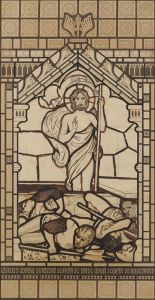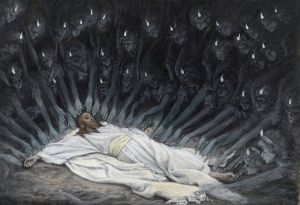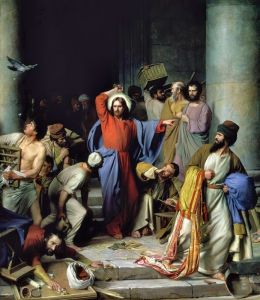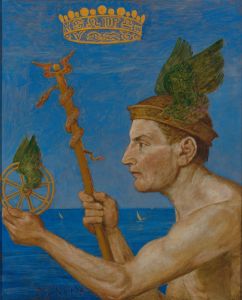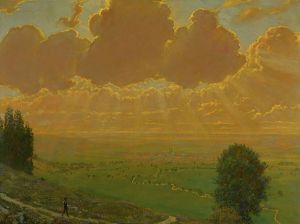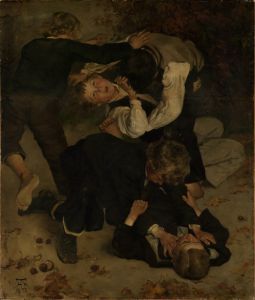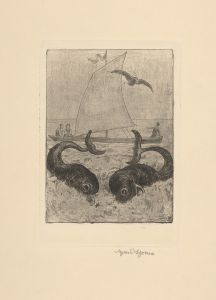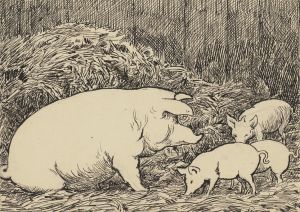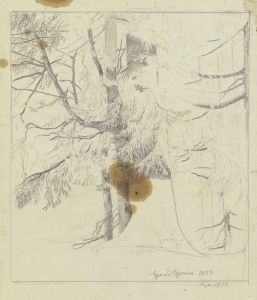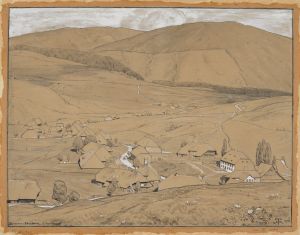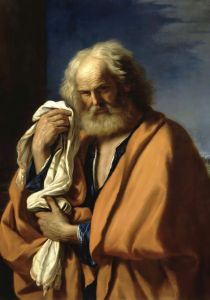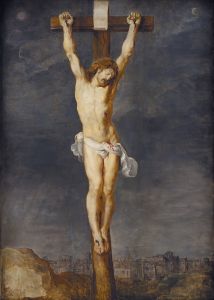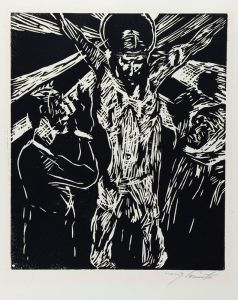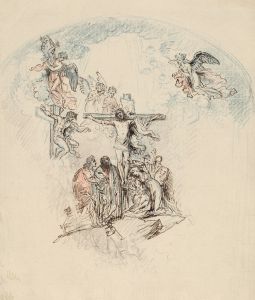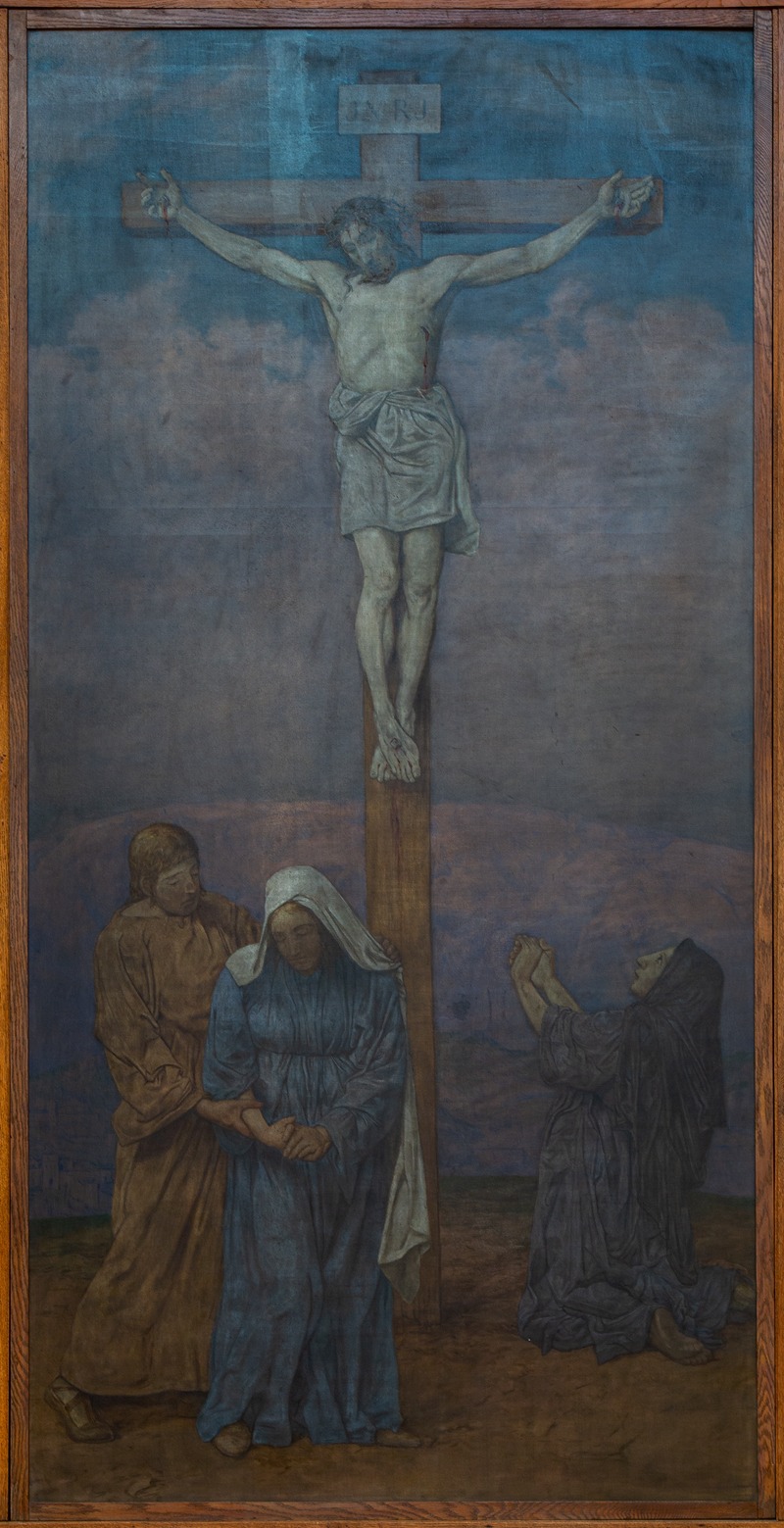
Kreuzigung Christi
A hand-painted replica of Hans Thoma’s masterpiece Kreuzigung Christi, meticulously crafted by professional artists to capture the true essence of the original. Each piece is created with museum-quality canvas and rare mineral pigments, carefully painted by experienced artists with delicate brushstrokes and rich, layered colors to perfectly recreate the texture of the original artwork. Unlike machine-printed reproductions, this hand-painted version brings the painting to life, infused with the artist’s emotions and skill in every stroke. Whether for personal collection or home decoration, it instantly elevates the artistic atmosphere of any space.
Hans Thoma's painting Kreuzigung Christi (The Crucifixion of Christ) is a work by the German painter Hans Thoma (1839–1924), who was known for his contributions to 19th-century German art. Thoma's style often combined elements of Romanticism, Realism, and Symbolism, and he drew inspiration from both traditional Christian themes and the natural world.
Kreuzigung Christi depicts the crucifixion of Jesus Christ, a central event in Christian theology. The painting portrays the moment of Christ's suffering on the cross, a subject that has been a recurring theme in Western art for centuries. Thoma's interpretation of this biblical scene reflects his unique artistic approach, which often emphasized clarity, simplicity, and a connection to nature.
The exact date of the painting's creation is not widely documented, but it is consistent with Thoma's broader body of work, which frequently explored religious and allegorical themes. Thoma's art was influenced by his upbringing in the Black Forest region of Germany, and his works often exhibit a deep sensitivity to both human emotion and the surrounding environment.
Kreuzigung Christi is notable for its restrained and contemplative tone. Unlike some depictions of the crucifixion that emphasize dramatic or highly emotional elements, Thoma's version is characterized by a sense of quiet solemnity. The composition and use of color reflect his interest in creating a harmonious and balanced visual experience.
Hans Thoma was a prominent figure in the German art world during his lifetime, and his works were celebrated for their accessibility and emotional resonance. He served as the director of the Karlsruhe Academy of Fine Arts and was highly regarded for his contributions to both painting and printmaking.
While Kreuzigung Christi is not as widely known as some of Thoma's other works, it remains an example of his ability to reinterpret traditional themes in a way that is both personal and timeless. The painting is part of Thoma's broader legacy, which continues to be appreciated by art historians and enthusiasts for its unique blend of technical skill and emotional depth.
Further details about the painting's current location or specific historical context are not readily available.





